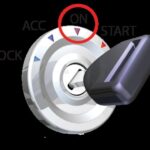Understanding the different OBD (On-Board Diagnostics) standards is crucial for anyone working on modern vehicles. From the early days of automotive computerization to today’s sophisticated systems, OBD has evolved significantly. If you’re diving into car repairs, modifications, or diagnostics, knowing “What Is Obd0 Obd1 Obd2” is fundamental. This guide will break down these standards, helping you identify them and understand their differences.
The evolution of OBD systems reflects the increasing complexity of vehicle electronics and emissions control. Let’s look at the progression from OBD0 to OBD2:
OBD0: The Precursor to Standards
OBD0 refers to the earliest attempts at on-board diagnostics, primarily found in vehicles from the late 1980s to early 1990s. These systems were manufacturer-specific and lacked standardization. OBD0 systems typically provided limited diagnostic information, often through blink codes or proprietary interfaces.
Key characteristics of OBD0:
- Years: Late 1980s to early 1990s.
- Standardization: None, manufacturer-specific.
- Diagnostic Information: Limited, often blink codes.
- Connector: Varies, not standardized.
OBD1: Stepping Towards Standardization
OBD1 represented the first steps toward standardized automotive diagnostics. Introduced in the early to mid-1990s, OBD1 systems aimed to monitor emissions-related components. However, standardization was still limited, with different manufacturers using varying diagnostic connectors and protocols.
Key characteristics of OBD1:
- Years: Early to mid-1990s.
- Standardization: Partial, some standardization in emissions monitoring, but connector and protocols varied.
- Diagnostic Information: More comprehensive than OBD0, including fault codes.
- Connector: Various connectors, often manufacturer-specific, not universally standardized.
OBD2: The Standardized Diagnostic System
OBD2 is the standardized system that became mandatory in the United States in 1996 and subsequently adopted in other countries. OBD2 provides a universal standard for diagnostic connectors, fault codes, and communication protocols. This standardization greatly simplified vehicle diagnostics and repair.
Key characteristics of OBD2:
- Years: 1996 onwards (mandated in the USA).
- Standardization: Fully standardized connector (SAE J1962), diagnostic trouble codes (DTCs), and communication protocols.
- Diagnostic Information: Comprehensive, including emissions, powertrain, and some body and chassis systems.
- Connector: Standardized 16-pin J1962 connector, typically located within reach of the driver’s seat.
OBD2A and OBD2B: Variations within OBD2
Within OBD2, there are variations like OBD2A and OBD2B, primarily seen in Honda vehicles and other makes during the transition period of OBD2 implementation (roughly 1996-2000). These are not separate standards but rather variations in ECU connectors and wiring within the OBD2 framework. For example, as illustrated in the original forum post, a 1999 Honda Civic Type R might use an OBD2B ECU.
These variations often necessitate conversion harnesses when swapping ECUs or using aftermarket engine management systems, as highlighted by the need for an OBD2B to OBD2A conversion harness for certain modifications.
Identifying Your OBD Type
To identify your vehicle’s OBD type, you can typically:
- Check your vehicle’s year: This is a general guideline, but not always definitive, especially during transition years.
- Locate the diagnostic connector: OBD2 connectors are standardized 16-pin and are usually under the dashboard on the driver’s side. OBD1 and OBD0 connectors are often in the engine bay or passenger footwell and are less standardized in shape and pin count.
- Inspect your ECU: As shown in the original post, visually inspecting the ECU connectors can help identify OBD2A or OBD2B variations, particularly in older OBD2 compliant vehicles.
Conclusion
Understanding the differences between OBD0, OBD1, and OBD2 is essential for anyone involved in automotive diagnostics and repair. OBD2’s standardization has revolutionized how vehicles are diagnosed, making it easier to identify and fix problems. While OBD0 and OBD1 are less common on modern vehicles, knowledge of these earlier systems is valuable when working on older cars. Knowing “what is OBD0 OBD1 OBD2” empowers you to approach vehicle diagnostics with confidence and clarity.
